Kansas Town Turns to Polyurethane Grouts for Solution By Deb Hammacher
Like most municipalities, Olathe, Kansas, faces the challenge of water infiltrating its sewer system through cracked pipes and leaking manholes. Treating storm water is an expense no system wants to incur.
Crews from Olathe Public Works keep leaks in check through an innovative chemical grout program that stands as a model for other municipalities.
For the last several years, Olathe has set up a system to repair these leaks with the use of polyurethane injection resins. These chemical grouts provide a permanent solution to stop both seeping and gushing leaks as well as to fill voids caused by water erosion or settlement.
The repair team seals leaks around manhole covers, laterals, pipe joints and service connections. They mainly use a combination of three products developed and manufactured by Prime Resins at its facilities in metro Atlanta for most of this work. All three of the products are independently tested and verified to meet NSF/ANSI Standard 61 for contact with drinking water, making them a good choice for a municipal water authority.
Supervisor Ira Speer says, “As a utilities group, we are constantly looking to identify our I&I (infiltration and inflow) problems by CCTV crews, manhole crews, construction crews, anybody involved in our sanitary sewer operation. As we come across leaks, we rate them based on severity, create work orders and prioritize them in our asset management system. A follow-up visit is made to determine the method we are going to use, whether it’s entering the manhole or probe grouting.”

These before-and-after photos show how expanding foam grouts can quickly seal even active water leaks
With probe grouting, the work is done from street level, with the grout injected around the exterior of the structure via long slender wands. The alternative is to place a worker inside the tunnel or manhole at the leak site, and have them make the repair from the inside.
Making data-based decisions is a priority for Olathe. “Our data collection and condition assessment is a major effort right now. With accurate data we can consider, all things being equal, what our priority should be versus just fixing everything,” notes Speer. The City of Olathe believes that chemical grout is a good business decision. “Using grout isn’t a hard decision. It is very cost effective. It is an easy tool to use and it works.”
To keep the operation organized, the I&I group outfitted a cargo trailer with all the tools, supplies and grout equipment they might need. This has also enhanced efficiency.
“Everything’s in one location. If a crew calls and they find a leak, it’s just a matter of hitching up that trailer, and we take off and have everything we need,” says Speer. “The equipment isn’t overly specialized; it’s user-friendly and is really reliable.” They use the M2 pump for dispensing the resin. The M2 consists of two Graco Monark air motors and pumps that operate independently, mounted on a portable wheeled cart.
Safety was a chief consideration when Olathe set up its program, so the safe nature of the products was a factor in their selection. The products are inert once reacted, providing an eco-friendly choice, and the single-component nature was a plus.
“The safety of the products was one of our biggest things looking at this program from the get go,” says Speer. “We can run one product right after another, there is little risk when you’re transporting it, all those things. The safety risk with that is at a low level.”
Also, since workers are often working in a wet environment, the team opted for a pneumatic rather than electric drill to drill the holes through which they inject the grout. The air-driven drill was a bigger initial investment than other options, and it has paid off in the long run from a safety standpoint. “We haven’t had any injuries. It’s a good, safe practice the way we do it. The safety side of it was a big deal for us, and I’m pretty proud of that,” says Speer.
The portability of the equipment has added to their success as well. Some manholes are difficult to access, but all they need is an air hose, the drill, their pump, grout and confined space equipment.
“We haven’t found a spot we couldn’t grout yet,” says Speer.
Another bonus is the low impact of the work. Repairs can be made quickly, leaks are sealed in minutes rather than hours, and where traffic is involved, with much less public inconvenience. Typically, repairs can be made without a full street closure. This means less public inconvenience to commuters and to business owners.
The grout crew stands ready to help other city departments as well. They helped seal leaks in a concrete dam spillway, prolonging the life of the structure until replacement is scheduled.
In addition, they used another Prime Resins chemical grout in late summer 2014 to fill voids under 12 sections of sidewalk that settled after a big project. To avoid complete replacement, including the new grass, they injected Prime Flex 985, a two-component polyurethane structural foam, under the sidewalk to stabilize the soil and prevent runoff from undermining the sidewalks.
The product came in cartridges, so crews didn’t have to worry about getting a plural-component pump to use it, making it a simple solution for a crew already seasoned at injecting grout.
Other municipalities could save a lot of money, efficiently and safely, in the long run if they adopted a chemical grout program similar to Olathe’s approach. Their ability to permanently stop manhole leaks quickly, safely, efficiently and cost-effectively saves the city from unnecessarily treating stormwater and potentially avoiding more disruptive repairs down the road.
Deb Hammacher is executive director of marketing for Prime Resins, Inc., a manufacturer of polyurethane, polyurea, epoxy and acrylate solutions for leak sealing and infrastructure protection and repair. She can be contacted at dhammacher@primeresins.com or via the company website www.primeresins.com.
To stop water leaks and fill voids, the Olathe crews use a range of products depending on the application. They primarily use three products from Prime Resins, including:
- Prime Flex 900XLV, a super thin, hydrophilic resin that reacts with water and expands to form a closed-cell, watertight foam. Its low viscosity makes it suitable for hairline cracks.
- Prime Flex 920, a single-component, water-activated polyurethane resin used to seal gushing leaks and fill voids.
- Prime Flex Hydro Gel SX, a single-component, hydrophilic polyurethane resin that reacts with water. This product can form either a closed-cell, watertight foam or impermeable gel depending on the water-to-resin mix ratio (range = 1:1 to 15:1 water:resin).
Summer 2015 Back Issue
$4.95
Remedial Waterproofing
Green Roof Profile: Bulls Practice Facility
Sealing Manholes And Water Tunnels:
Green Roof Directory
AVAILABLE AS DIGITAL DOWNLOAD ONLY
Description
Description
Remedial Waterproofing
By Melissa Morton
Keeping water out of an existing below-grade structure is often more complex than new construction. Options include curtain grouting, pumps, crack repair, and drainage systems that collect and divert water from inside the structure.
Green Roof Profile: Bulls Practice Facility
Completed last fall, the Advocate Center is a training facility for the Chicago Bulls basketball team featuring state-of-the-art weight training and practice space on the inside and an 11,300 sq. ft. green roof on top.
Sealing Manholes And Water Tunnels:
By Deb Hammacher
Sealing municipal tunnels—and the manholes that access them—is a significant waterproofing challenge.
Green Roof Directory
Published in conjunction with GreenRoofs.com, this is a comprehensive categorized list of the products and services offered to the vegetated roof industry.
Additional Info
Additional information
| Magazine Format | Digital Download Magazine, Print Mailed Magazine |
|---|

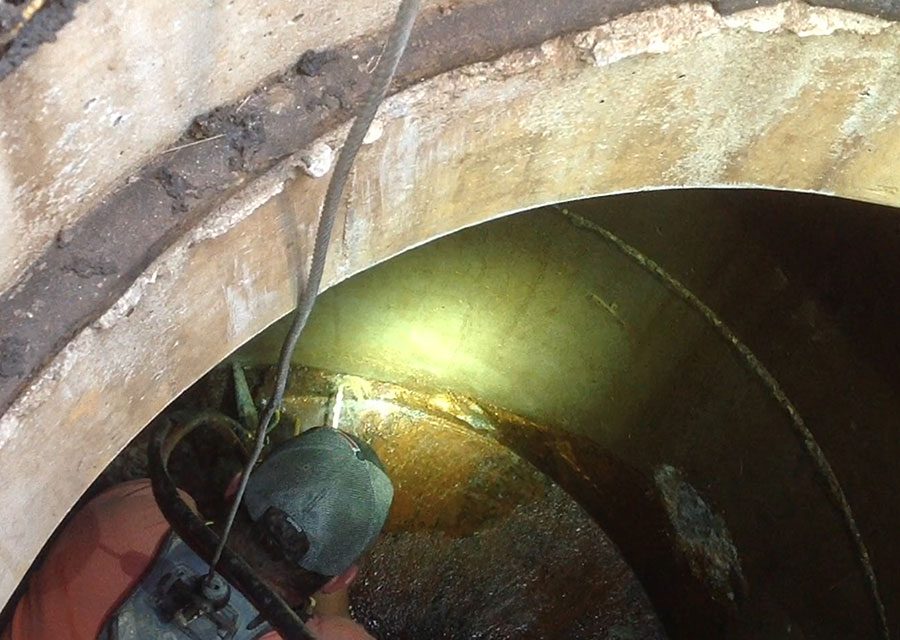
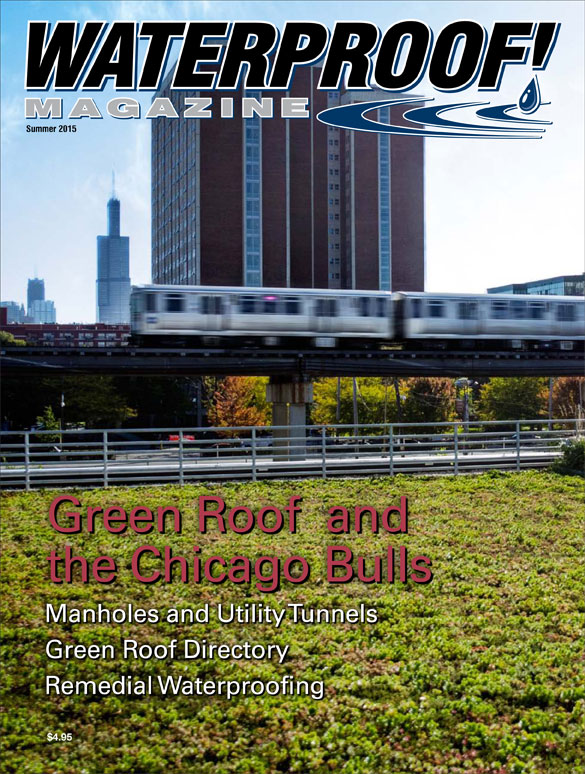
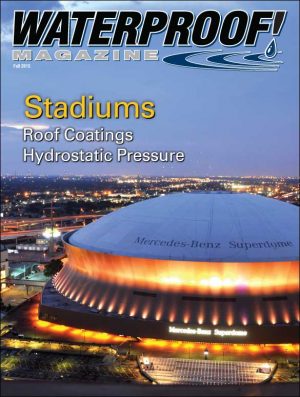
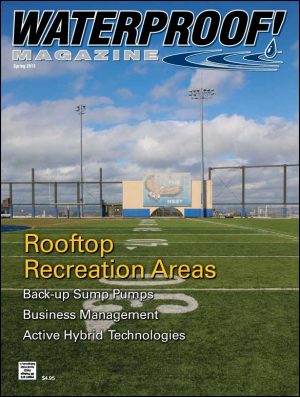


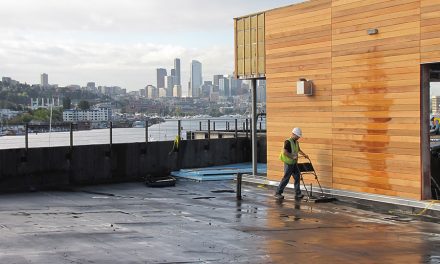
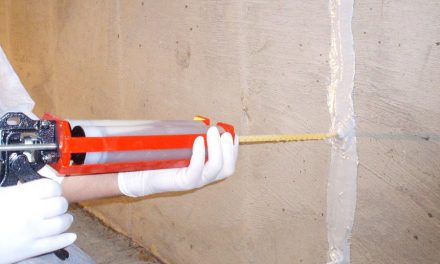
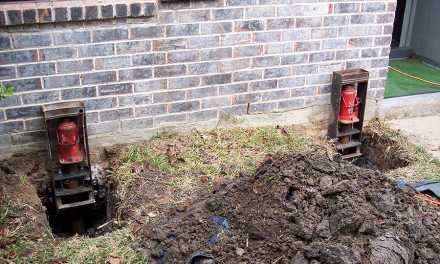











We are looking to stop a high pressure leak in a sewer tunnel. See link ATT
https://clipchamp.com/watch/R07lahASv8n